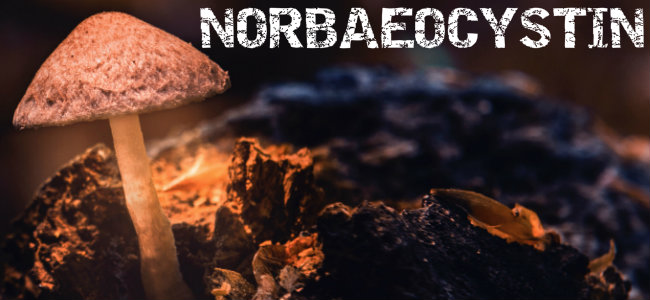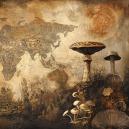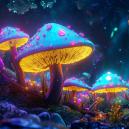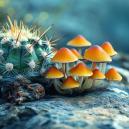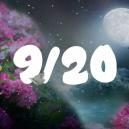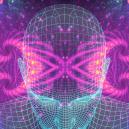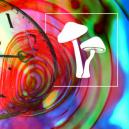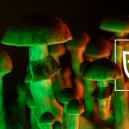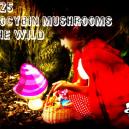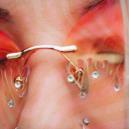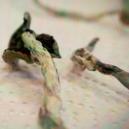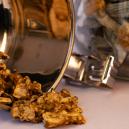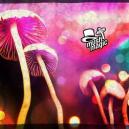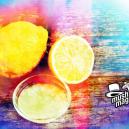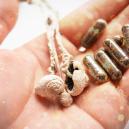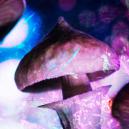Breaking Down The 4 Components Of Magic Mushrooms
Published : November 12th, 2018

Can you name the four critical components within magic mushrooms? We wouldn't judge you if the answer is no. Research on magic mushrooms is frustratingly limited. Still, it's essential to gain a basic understanding of the fascinating compounds contained within shrooms.
Most amateur psychonauts are quite familiar with psilocybin, the main psychoactive ingredient contained in magic mushrooms. Enjoyed in large doses by recreational cosmos-surfers and in microdoses by Silicon Valley’s most innovative entrepreneurs, psilocybin is the word on everyone’s lips. But what does it do?
Well, in order to gain a thorough understanding of psilocybin, it’s equally important to recognise the other chemical compounds within shrooms that influence psilocybin’s legendary effects. In fact, there are four main components of a magic mushroom: psilocybin (4-phosphoryloxy-N,N-dimethyltryptamine), psilocin (4-hydroxy-N,N-dimethyltryptamine), baeocystin (4-phosphoryloxy-N-methyltryptamine), and norbaeocystin (4-phosphoryloxytryptamine).
While those averse to chemistry may look at these terms with anxiety, what’s most important to understand is that the interplay between these various chemicals is ultimately responsible for shrooms’ versatile outcomes.
Let’s take a deeper look at each of these components and how it influences the shroom experience.
PSILOCYBIN
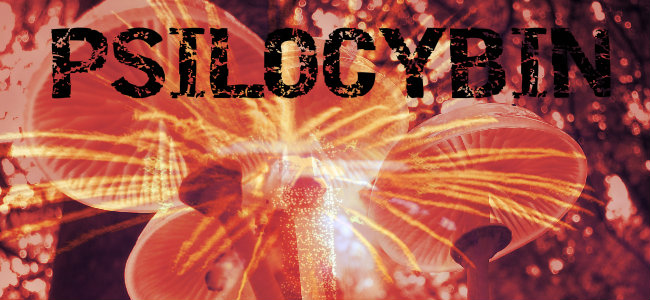
It’s no surprise that psilocybin is the most famed compound found in magic mushrooms. Present in over 200 different species, with over 100 of these belonging to the genus Psilocybe, the compound is a dead giveaway that a particular mushroom will induce psychoactive effects.
While psilocybin may be what you ingest to get high, it isn’t actually responsible for producing psychoactive effects. That responsibility belongs to psilocin. After all, psilocybin is what’s known as a prodrug, a substance that, once ingested, is immediately metabolised into an active compound. In this case, that compound is psilocin. From here, psilocin interacts with serotonin receptors in the brain (more on that in a bit).
Famed Swiss chemist and psychonaut legend Albert Hofmann (of LSD fame) is also responsible for synthesising psilocybin (and psilocin for that matter) from the mushroom Psilocybe mexicana in 1958. This event was later recorded in his 1963 patent. Unfortunately, since this time, there has been a dwindling body of compelling research on this compound. It wasn’t until recently that mainstream media has been reporting on the potential health benefits of psilocybin, among them providing end-of-life patients with peace of mind and relieving symptoms of depression in alcoholics.
Despite these potential applications, psilocybin’s status as a Schedule I drug makes it an illicit substance. As such, very few of these trials are given legal or financial support.
PSILOCIN
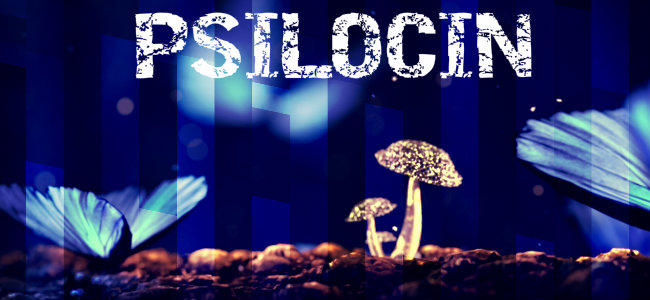
Perhaps not as lauded, but equally as important as psilocybin is psilocin. This compound does in fact appear in fresh and dried mushrooms, although in much smaller concentrations. Psilocin is quite unstable, forming blue and black bruises in the presence of oxygen.
Psilocin is most commonly formed through the process of dephosphorylation, which involves the removal of a phosphate group. To shroom consumers, this basically means psilocin becomes active once the body metabolises psilocybin. At this point, psilocin gets to work as an agonist (or partial agonist) on serotonin receptors 5-HT2A, 5-HT2C, and 5-HT1A.
This results in what individuals experience as a psychedelic trip. Although there are numerous similarities between the effects different people experience during a trip—such as euphoria, increased heart rate, and synaesthesia—psilocin acts in a way that ultimately affects each individual differently. Everything from tolerance level to set and setting greatly influence the experience, as there are both physical and mental variables that can be easily swayed.
BAEOCYSTIN
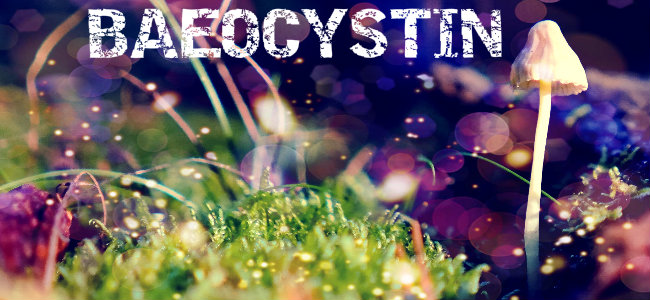
If you’re familiar with baeocystin, then congratulations! You’re well on your way to joining the upper echelon of psychonaut sages. Baeocystin is a structural analogue to psilocybin, meaning they are quite similar in chemical structure, differing only by one methyl group. As a result, baeocystin is said to induce a psychoactive experience similar to psilocin. This was only anecdotally confirmed in Jochen Gartz' book Magic Mushrooms Around the World, in which he cites how a 10mg dose of baeocystin produces a comparable effect to that of a similar amount of psilocin.
Synthesised from the Psilocybe baeocystis mushroom in 1968 by Leung and Paul, there is an unfortunate lack of research on baeocystin. Although their structure is quite similar, the difference could actually sustain a large impact on how baeocystin is metabolised, therefore impacting its overall effects on the body on mind.
NORBAEOCYSTIN
Like baeocystin, norbaeocystin is a vastly understudied analogue found in minute amounts in a wide variety of magic mushrooms. This tryptamine alkaloid is a derivative of baeocystin, which is of course a derivative of psilocybin. It is very difficult to pinpoint the exact mechanism that norbaeocystin has once magic mushrooms have been ingested. During the late ‘60s and early ‘70s, restrictions on scientific study of major drug components and their analogues all but halted the study of magic mushrooms entirely.
Despite the fact that there is hardly any research on norbaeocystin, it is still frustratingly labelled as Schedule I, making it a difficult substance to access and study.
WHY DON’T WE HAVE MORE INFORMATION?
At very least, we can assert that all four of these components are essential to producing what we know as a psychedelic trip. While some individuals may not understand why it’s so important to learn about molecules other than psilocybin and psilocin, scientists and medical patients are waiting for the floodgates of research to burst open. Scientists are naturally eager to know how the interplay of psilocybin derivatives affects particular shroom species and their overall drug effects.
Once we have more information on how each of these molecules works, we can then start to truly consider their application in the world of medicine. Plus, even for the recreational psychonaut, it will only make the decision-making process easier to know exactly what concentrations of which substances are contained within a sample. It will also make the effects easier to objectively gauge and record.
It’s critical to recognise that magic mushrooms were named the safest recreational drug by the 2017 Global Drug Survey. Furthermore, psilocybin is not associated with dependence, craving, or withdrawal. It’s really only a matter of time before we have a wealth of information on all four of these components.

